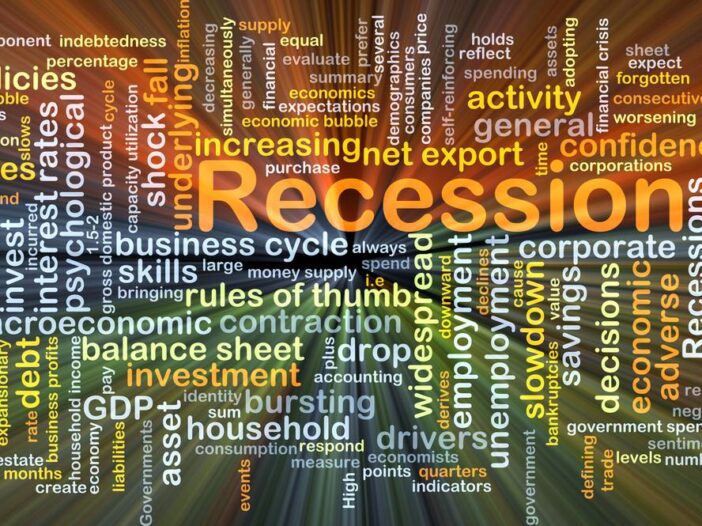A recession is technically defined as two or more consecutive quarters of declines in GDP. A depression is not technically defined but is understood as a prolonged period of growth that is either below the long-term trend or below potential growth.
Technical recessions can occur during depressions. There were two technical recessions (1929–33 and 1937–38) during the Great Depression (1929–40), yet the entire period was characterised by below-trend growth, high unemployment, and deflation. This occurred at least until FDR raised the dollar price of gold in 1933. Stock markets and commercial real estate prices did not recover their 1929 highs until 1954, a full 25 years later.
We are in a new depression now. Growth declined in 2008. The 2009–19 recovery averaged annual growth of about 2.2%, well below the long-term trend of 3.5% to 4.5%. GDP declined again by 3.4% in 2020; the steepest one-year decline since 1946. Annualised growth for the first half of 2021 is 6.4%, but that is slowing quickly; the latest estimate for the third quarter of 2021 from the Atlanta Fed is annualised growth of 5.7%.
The December 2019 level of output was not recovered until July 2021. Interest rates have been declining sharply. That’s a sign of disinflationary expectations and may be an early warning of a new recession in 2022. This is characteristic of a new great depression that can last for many years. Once the inflation narrative fades and the disinflation narrative comes to the fore, we can expect a stock market correction as asset prices adjust to the return of an era of slow growth.
How is this pandemic-fuelled economic crisis different from past financial crises?
The effects of the pandemic on the economy will be intergenerational. Most financial panics or recessions are followed by recovery within a year or less. Pandemics produce different patterns.
One study from the Federal Reserve Bank of San Francisco in collaboration with outside academics showed that of the 15 highest fatality pandemics since the Black Death in the 1350s, the average time needed to return to normal levels of interest rates, growth, and employment is more than 30 years.
This pattern of recovery from extreme events was seen in the aftermath of the Great Depression (although that was an extreme economic collapse, not a pandemic).
While the Great Depression was over in 1940 (partly because of war spending as the US moved toward the Second World War), the behavioural changes it produced did not fade until the late 1960s.
How to Survive Australia’s Biggest Recession in 90 Years. Download your free report and learn more.
The 1950s were a period of peace and prosperity in the US. Still, Americans maintained high savings rates, mostly avoided conspicuous consumption, and lived frugally as they had learned to do in the 1930s and during the Second World War. This did not change until the baby boomers became young adults and teenagers in the late 1960s. The behavioural changes induced by the Great Depression did not fade until 30 years after the depression was over. Such is the staying power of social trauma whether it be war, depression, or pandemic.
We will not recover from this pandemic fully until 2045 or later in terms of savings, consumption, disinflation, low interest rates, and low growth. The only exception to this estimate would be if the pandemic is followed by another equally shocking event such as war or a financial panic.
In terms of the policy responses of governments to the pandemic, what major mistakes have been made?
Almost all of the economic and social harm caused during the pandemic comes not from the virus itself but from the policy response to the virus.
Public health officials should do the best they can. Staying home if you have symptoms and washing hands regularly are all for the good. Economic lockdowns do not always stop the spread of the virus, but they do destroy the global economy to some extent. Health officials should never have been put in charge of the economy. That was a huge mistake by Trump, and it has been made worse by Biden.
Immunologists saw some benefits from lockdowns, but these would have happened anyway because each viral outbreak runs a predictable 8–10-week course. What the experts ignored were the costs in terms of deaths from suicide, excessive alcohol consumption, drug abuse, domestic violence, depression, anxiety, and other dysfunctional behaviours. Benefits of public health policy were minimal, but the economic, social, and psychological costs were great and are still being paid.
We’ll learn to live with COVID from a disease perspective. Still, the mental health costs, social dysfunction, and economic drag will remain for decades.
Next time I’ll look at how COVID will impact the economic future of the world. It’s another area with some big questions, the answers of which are vital to you as an investor.
Regards,
 |
Jim Rickards,
Strategist, The Daily Reckoning Australia
PS: Our publication The Daily Reckoning is a fantastic place to start your investment journey. We talk about the big trends driving the most innovative stocks on the ASX. Learn all about it here.

